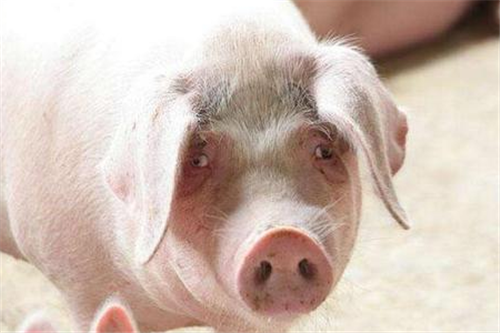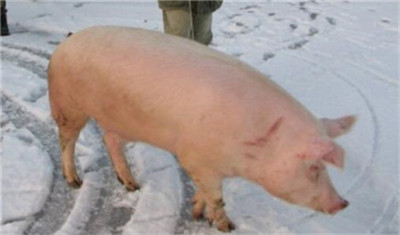Sows are not in estrus after weaning? Solving the problem of nutrition is the key!
leading language
The root cause of these problems is that the nutrition reserve of sow body is seriously insufficient when entering the second reproductive cycle, because the reproductive system has lower priority in nutrition allocation than other organs and systems, so the nutrition deficiency has the greatest impact on reproductive system. Of course, the lack of oestrus in weaning gilts is also related to sow health, especially reproductive tract health and the environment of induction.
Here, we mainly solve a series of reproductive obstacles such as non-estrus after weaning from nutrition management.
01
Nutrition principles and concepts
Nutrient reserves required for oestrus require not only large nutrient reserves, but also reproductive nutrient reserves.
Large nutrient reserves mainly refer to the reserves of starch, protein, fat, macro minerals and other nutrients, reflected in body weight and body weight;
Reproductive nutrient reserve mainly refers to the key nutrients related to reproductive structure and reproductive function, such as special vitamins, special trace elements and other nutrients.
Adequate stocks of both nutrients are essential for the reproductive process.
The main reasons for insufficient nutrient reserves are:
Self-weight gain of primiparous sows (self-weight gain of primiparous sows is about 50kg), substandard initial mating, insufficient/improper feeding restriction in early and middle pregnancy, insufficient daily nutrition, insufficient feed intake during lactation, insufficient foetus tapping.
The main objectives of the Great Nutrient Reserve are:
At weaning, the weight loss of sows was not more than 10kg, and the body condition score was 2.5~3 points. To achieve this goal, it is not enough to increase feed intake during lactation. It is necessary to start from the whole process of breeding piglets (as shown below).
Fig. 1 Effect of weight loss during lactation on the interval from weaning to estrus
Reproductive nutrition reserves:
First, attention should be paid to insufficient reproductive nutrition intake due to reduced concentrate intake during feeding restriction period;
Second, it should be noted that there are differences between the nutritional needs of lactation and reproduction. In the preparation period of mating, even if the feeding is relatively rich in nutrients, it can not meet the reproductive nutritional needs required for oestrus.
Third, it is also necessary to consider the increase in demand for reproductive nutrition in high temperature seasons; fourth, it is necessary to consider the destruction of reproductive nutrition in feeds by environmental factors; and fifth, it is necessary to consider that the amount of commercial feed added may be insufficient.
02
Measures to solve the problem of weaning non-estrus of gilts
1) The initial match should be up to standard.
The first mating standard of imported varieties should reach: weight above 140kg, backfat 18~22mm, age above 230d. If the weight is light, the back fat is thin, and the sow is not old enough to breed prematurely, it will lead to: delayed estrus after weaning, high rate of re-mating; low litter size; increased abortion opportunity in cold season; low lactation volume and shortened utilization period.
2) Some nutrition levels of pregnant sows can be increased by about 10% compared with multiparous sows, such as CP 14%, Lys 0.7%, Ca 0.9%, TP 0.8%, available phosphorus 0.45%.
3) In the later stage of pregnancy, the sow still needs to increase the feed moderately.
Because 2/3 of the fetal weight is increased in the last 1/3 of the sow's gestation period, if the fetus is not aborted, according to the principle of preferential nutrition distribution of the offspring, the sow's nutrition is preferentially supplied to the fetus. In the case of insufficient intake, the sow's body fat or even body protein may be used to supply the growth of the fetus, which means that the sow is losing weight and fat in the late pregnancy!
Moreover, if the fetus is not attacked, it will lead to the decline of sow constitution and affect the delivery; in addition, the insufficient birth weight of the fetus will affect the survival rate of piglets during lactation. In fact, the investigation found that birth weight less than 1.5 kg will not occur due to excessive birth weight.

4) Exercise sow intestinal function.
A good stomach makes a good appetite. Here,"stomach good" refers to good gastrointestinal function and large gastrointestinal volume. At the International Conference on Nutrition and Intestinal Health held in Europe in 2014, participating experts believed that:
One is that in addition to digestive functions, animals 'intestines also have chemical sensing and receiving body signals. The small intestine is not only a passive absorption channel, but also a regulatory control function before absorption. Therefore, raising animals must first raise the small intestine;
The second is the control means for piglet diarrhea, not only considering pathogenic factors, but also not abusing antibiotics, but from improving the environment, adjusting water quality and strengthening nutrition;
Third, regulate the intestinal health of piglets through the feeding of sows. Therefore, pig farms should take sows as the core elements to strengthen nutrition and management, so as to regulate the milk of sows; fourth, special attention should be paid to the improvement of sow feeding management in hot environment.
Pregnant sows, especially the first pregnant sows, in the whole pregnancy period to supplement high-quality crude fiber, especially green feed is very necessary, can reduce constipation, exercise intestinal function, expand gastrointestinal volume, promote reproductive organ development, increase sow happiness index.
It was found that green feed supplemented 3 days before parturition and 7 days after parturition was helpful to reduce lactation disorder and increase feed intake after 7 days.
5) Concentrate the dominant resources of pig farms and increase the feed intake of first-born sows during lactation.
As can be seen from Figure 1, the greater the weight loss during lactation, the longer the time interval from weaning to oestrus, but this feature is more pronounced mainly in the first fetus (Vesseuret al., 1994)。Therefore, increasing feed intake during lactation is the most effective measure to reduce weaning fat loss in piglets, and the ideal feed intake target (kg) must be achieved: 1.8+0.5× (number of piglets suckling sows).
03
Key Points for Increasing Feed Intake of Newborn Sows during Lactation
1) Temperature.
The optimum temperature for sows is 18~22℃, and every 2℃ increase above 24℃ will reduce 0.5 kg feed intake. The ideal cooling methods for delivery room include tile curtain cooling, local cold wind cooling, dripping cooling, and it is best to cooperate with roof and wall insulation, and the effect will be better (as shown in Figure 2 below).
Fig. 2 Tile water curtain cooling
2) Clean and adequate drinking water.
The water supply capacity of the drinking water device is 1.5~2L/min, and the water temperature is about 17 ° C. It is best to have a trough for drinking water, and the water quality reaches the drinking water standard of human beings.
3) Supplementing disease-resistant nutrition.
The study found that only when animals eat every day after the substance is fully metabolized, animals have a good appetite, if the metabolism is not smooth, will play a blocking role, many substances block the metabolic pathway, then animals have no appetite. The role of disease-resistant nutrition in stimulating appetite, on the one hand, makes the metabolism of substances in the body smoother. On the other hand, it can improve the health of sows.
4) Clean chute.
It is necessary to clean the trough before feeding every time in summer to remove rancid smell and reduce poisoning of putrefaction substances.
5) Feeding restriction in early and middle pregnancy.
During pregnancy, the intake of basic nutrition should be strictly according to the feeding standard, and excessive intake should not be allowed, because the feed intake in early and middle pregnancy was negatively correlated with the feed intake in lactation, while the correlation between the feed intake in pregnancy and the feed intake in lactation was not significant. Intestinal exercise during pregnancy: The intestinal function of sows is not only the basis for the results of lactation feed intake, but also an important guarantee for sow constitution.
6) Feed raw materials are clean and fresh;
Feed water, the ratio of water to feed is 4:1; increase feeding times for 3~4 times, feed in low temperature period.
7) Increase nutrient concentration of lactation feed of sow.
For example, protein can reach 20%, lysine supplement to 1.2% and fat supplement at the same time, pay attention to the balance between amino acids.
8) Prevention of postpartum infection in sows.
Production found that postpartum infected sows, not only feed intake will be reduced, but also will directly affect weaning estrus and pregnancy, so through prenatal elimination of pathogens, intrapartum infusion and postpartum injection anti-infection and perfusion of Gong Yanjing to eliminate lochia and other measures to actively prevent. Once breast birth canal infection occurs, active treatment is required.
9) weaning in 2 batches and early weaning.
Methods: The heavier piglets were weaned 2~ 5 days earlier than the lighter piglets.
③ Function: Reduce the burden of lactation of sows; enhance the physique of piglets with light weight;
④ Results: sow oestrus early; piglet uniformity is good; especially suitable for a sow. Weaning 3 days earlier than normal can reduce the burden of lactation and restore the body condition of sow.
10) Supplemental reproductive nutrition.
Reproductive nutrition is supplemented from the beginning of lactation until pregnancy. Especially in high temperature season, the demand for reproductive nutrition is more.
Related
- On the eggshell is a badge full of pride. British Poultry Egg Market and Consumer observation
- British study: 72% of Britons are willing to buy native eggs raised by insects
- Guidelines for friendly egg production revised the increase of space in chicken sheds can not be forced to change feathers and lay eggs.
- Risk of delay in customs clearance Australia suspends lobster exports to China
- Pig semen-the Vector of virus Transmission (4)
- Pig semen-the Vector of virus Transmission (3)
- Five common causes of difficult control of classical swine fever in clinic and their countermeasures
- Foot-and-mouth disease is the most effective way to prevent it!
- PED is the number one killer of piglets and has to be guarded against in autumn and winter.
- What is "yellow fat pig"? Have you ever heard the pig collector talk about "yellow fat pig"?



